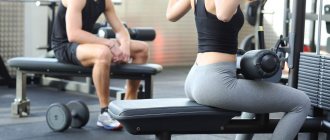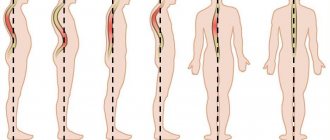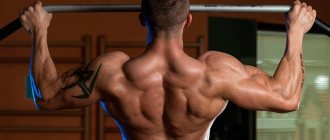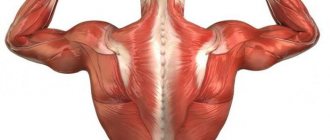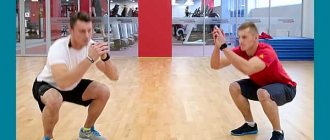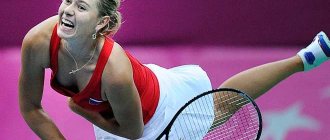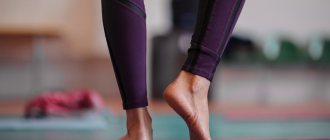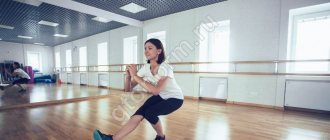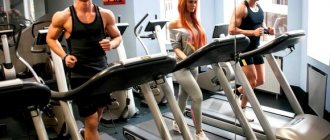What is trail running
Trail running or simply cross-country running is a subtype of cross-country running that is performed in unprepared territory with variable terrain and natural obstacles. The concept includes almost all types of terrain, except asphalt and prepared stadiums. Trail running is the most practical and challenging type of running that requires a certain level of physical fitness. The main types of terrain are:
- Mountains;
- Any wilderness;
- Descents;
- Woodland;
- Gorges;
- Hills.
Even shallow rivers that can be crossed (depending on the time of year) become an obstacle for the trail runner. Each race is a test of your capabilities, which improves your physical fitness to overcome more difficult distances.
GTO mixed movement for 1 km (1000 meters)
The GTO complexes contain standards for mixed movement. They represent a combination of running, simple and accelerated walking over a certain distance.
Usually practiced on level ground (stadiums). But they can also be used on rough terrain. It is important here that there is no snow, that there is a solid base that is cleared of all kinds of obstacles.
GTO mixed movement 1000 meters
| Boys | steps | Girls | ||||||
| 1 km | 7.10 | 6.40 | 5.20 | 1st stage (6-8 years) | 7.35 | 7.05 | 6.00 | 1 km |
| 9.00 | 7.00 | 6.00 | Level 1 (6-8 years) rough terrain | 9.30 | 7.30 | 6.30 | ||
| Men | Women | |||||||
| 2 km | 20.00 | 18.00 | 14.00 | 10th stage (60-64 years old) | 23.00 | 21.00 | 18.00 | 2 km |
| 3 km | 33.00 | 30.00 | 24.00 | 10th stage (60-64 years old) rough terrain | 34.00 | 29.00 | 26.00 | |
| 2 km | 22.00 | 20.00 | 16.30 | 10th stage (65-69 years old) | 25.00 | 23.00 | 20.00 | |
| 3 km | 34.30 | 31.30 | 25.30 | 10th stage (60-64 years old) rough terrain | 34.30 | 31.30 | 25.30 | |
| 2 km | 24.00 | 22.00 | 19.00 | 11th stage (70+ years) | 28.00 | 26.00 | 22.00 | |
| 3 km | 39.00 | 35.00 | 29.00 | 11th level (70+ years) rough terrain | 36.00 | 32.00 | 29.30 | |
When is mixed movement used?
Considering that mixed movement does not provide for any temporary standards for covering the distance, it is used for the youngest, as well as the oldest age groups, for which other standards are not yet (no longer) applied. As a rule, these are children aged 6 to 8 years, as well as elderly people over 60 - 70 years old. There are no upper age restrictions. The main thing is for a person to stand on his own feet.
It is important to take into account here that each person involved in sports can make the decision to participate in mixed movement independently. The main criterion is to overcome the distance. At the same time, how and for how long you will do it is of no particular interest to anyone.
Preparation
By its nature, mixed movement is not so much a competition as simple participation in a sporting event. But all participants must follow some simple rules to achieve their goals and ensure a safe finish. These include:
- no medical contraindications for this type of exercise;
- comfortable clothes (preferably a tracksuit and sneakers, or other similar clothing for the season);
- having minimal physical fitness. In this case, long walks, short jogs (even short distances), fast walking, and general physical exercise are good options.
It is optimal if the athlete keeps himself in good shape on an ongoing basis. To do this, it is enough to exercise daily for 15–20 minutes, showing little physical activity, eating right, performing simple, versatile exercises and actions, keeping the body in good shape.
How to do the exercise
Mixed movement tactics require moving from the starting point to the finishing point. To do this, you can perform the following actions: run, walk quickly, just walk at a normal pace.
Typically, participants start with a light jog, then, feeling a little tired, they move on to a fast walk with a decrease in the intensity of movement to a normal step. The interval lasts until the body is restored for further active movement. Then you can start jogging again until you get tired.
To avoid overexertion, the running pace should be slow. It is not advisable to stop completely while moving. It's better to just slow down, but continue walking towards the finish line. But even after you cross the finish line, you should not immediately stop, sit down, or otherwise immobilize your body. It’s better to walk around a little, do simple exercises with your hands aimed at normalizing blood circulation and stabilizing breathing.
Remember, in older people, like in children, the internal organs responsible for absorbing energy and processing various substances work a little differently than in an adult. Excessive stress on them may cause more harm than good. And this must be taken into account during the exercise.
How to adapt in schools
Now that we have dealt with the main points of performing mixed movement, let’s look at its practical application in schools. This type of sports training is perfect for students in grades 1–3. Its main advantage is to develop in children determination, discipline, the ability to objectively calculate their own strengths, and the primary skills of healthy competition.
The exercise can be performed outdoors, as well as in gyms of various sizes. It can be organized in the form of a sports relay race, when children move from one wall of the gym to another and take turns changing. It all depends on the imagination of a particular teacher.
For children, this approach allows them to ensure proper development of the body, relieve excess energy accumulated during lessons in order to restore attentiveness, and provide an opportunity to concentrate on further intellectual work.
| 1 km | 7.10 | 6.40 | 5.20 | 1st stage (6-8 years) | 7.35 | 7.05 | 6.00 | 1 km |
| 9.00 | 7.00 | 6.00 | Level 1 (6-8 years) rough terrain | 9.30 | 7.30 | 6.30 | ||
| Men | Women | |||||||
| 2 km | 20.00 | 18.00 | 14.00 | 10th stage (60-64 years old) | 23.00 | 21.00 | 18.00 | 2 km |
| 3 km | 33.00 | 30.00 | 24.00 | 10th stage (60-64 years old) rough terrain | 34.00 | 29.00 | 26.00 | |
| 2 km | 22.00 | 20.00 | 16.30 | 10th stage (65-69 years old) | 25.00 | 23.00 | 20.00 | |
| 3 km | 34.30 | 31.30 | 25.30 | 10th stage (60-64 years old) rough terrain | 34.30 | 31.30 | 25.30 | |
| 2 km | 24.00 | 22.00 | 19.00 | 11th stage (70+ years) | 28.00 | 26.00 | 22.00 | |
| 3 km | 39.00 | 35.00 | 29.00 | 11th level (70+ years) rough terrain | 36.00 | 32.00 | 29.30 | |
Pros and cons of trail running
The main advantages of trail running:
- Marked increase in physical fitness (superior to almost all types of running in effect);
- Increased endurance and explosive speed and strength indicators;
- Increased coordination;
- Involves all muscle groups;
- Ability to quickly make decisions, depending on the situation;
- An exciting and fun sport;
- Improves wilderness survival skills.
Despite the impressive list of advantages, this type of running also has a number of disadvantages :
- Requires preliminary physical training (mastering different running techniques, training muscles in the gym, performing other specialized exercises);
- Requires a special form. Regular clothes are not suitable. Everything from a backpack to socks and trail running shoes is selected taking into account the specialization of running;
- Increased injury rate compared to other types of running.
School and student standards for running 2000 meters*
Students of universities and colleges
| Standard | Boys | Girls | ||||
| Rating 5 | Score 4 | Score 3 | Rating 5 | Score 4 | Score 3 | |
| 2000 meters | 8 m 40 s | 9 m 20 s | 10 m 00 s | 10 m 00 s | 11 m 10 s | 12 m 20 s |
11th grade school
| Standard | Boys | Girls | ||||
| Rating 5 | Score 4 | Score 3 | Rating 5 | Score 4 | Score 3 | |
| 2000 meters | 8 m 40 s | 9 m 20 s | 10 m 00 s | 10 m 00 s | 11 m 10 s | 12 m 20 s |
Grade 10
| Standard | Boys | Girls | ||||
| Rating 5 | Score 4 | Score 3 | Rating 5 | Score 4 | Score 3 | |
| 2000 meters | 8 m 40 s | 9 m 20 s | 10 m 00 s | 10 m 10 s | 11 m 40 s | 12 m 40 s |
9th grade
| Standard | Boys | Girls | ||||
| Rating 5 | Score 4 | Score 3 | Rating 5 | Score 4 | Score 3 | |
| 2000 meters | 9 m 20 s | 10 m 00 s | 11 m 00 s | 10 m 20 s | 12 m 00 s | 13 m 00 s |
8th grade
| Standard | Boys | Girls | ||||
| Rating 5 | Score 4 | Score 3 | Rating 5 | Score 4 | Score 3 | |
| 2000 meters | 10 m 00 s | 10 m 40 s | 11 m 40 s | 11 m 00 s | 12 m 40 s | 13 m 50 s |
7th grade
| Standard | Boys | Girls | ||||
| Rating 5 | Score 4 | Score 3 | Rating 5 | Score 4 | Score 3 | |
| 2000 meters | 13 m 00 s | 14 m 00 s | 15 m 00 s | 14 m 00 s | 15 m 00 s | 16 m 00 s |
Note*
Standards may vary depending on the educational institution. Differences can reach +-20 seconds.
For students in grades 4-6 of a general education school, the standard for running 2000 meters is to cover the distance without taking into account time.
Who is this run suitable for?
This is a competitive type of running, so it is suitable for both those who like to compete with other athletes and those who prefer to challenge themselves and their abilities. Cross-country running is a sport that is included in the “Ready for Labor and Defense” complex.
According to the GTO standards, cross-country running is carried out at the following distances:
- 1 km;
- 2 km;
- 3 km;
- 5 km.
In general, trail running is suitable for anyone who wants to experience intense emotions from sports, gain powerful physical training, and even become an expert in moving through the most impassable terrain.
Everything you need to know about GTO
The All-Russian physical culture and sports complex “Ready for Labor and Defense” has been actively implemented in Yamal for several years now. And this is good. Here you get better health, prestige, and additional points for the Unified State Exam.
To put it bluntly, the health situation for Russians is not very good. Sixty percent of men and forty percent of women smoke. Half the country! Fifty-eight percent of Russians suffer from physical inactivity. It is because of lack of movement that problems with the heart and blood vessels begin. According to Rosstat for 2020, about sixty percent of Russians surveyed do not play sports. Driving to and from work and watching football matches on TV - that’s all physical education is. What prevents our fellow citizens from going to the gym or doing exercises in the morning? The most popular answer is lack of time. One of the ways to solve these problems is the development of the all-Russian movement “Ready for Labor and Defense!” By 2020, all Russians will have to pass the GTO standards. Schoolchildren and students will be the first to test their capabilities, then the rest of the population, including pensioners, will demonstrate their achievements. Many Yamal residents are ready to climb the eleven age levels and pass twelve tests, from swimming and running to shooting and throwing sports equipment. For clarification whether this is so and what to expect from the GTO, the Sever-Press news agency turned to the Department of Physical Culture and Sports of the Yamalo-Nenets Autonomous Okrug.
What is the GTO complex? The all-Russian movement “Ready for Labor and Defense” is a physical training program. It operated in our country from 1931 to 1991 and covered the population aged ten to sixty years. Thanks to the GTO, the USSR had its own champions and winners, the program educated and influenced the healthy lifestyle of every person. With the collapse of the USSR, the GTO complex ceased to exist. Since 2014, its revival began in Russia.
Why is it needed? Compliance with the standards motivates adults and children to engage in physical activity, lead a healthy lifestyle, go to sports clubs, and visit gyms.
Who can fulfill the TRP standards? Russians aged from six to seventy years and older can comply with GTO standards.
What privileges does the GTO badge provide? The presence of insignia is taken into account when entering higher educational institutions. Students with a gold badge may be awarded an increased state academic scholarship. For example, for five gold signs received in a row, a government award is provided. Employers were advised to consider the issue of bonuses and allowances for distinguished employees. The incentive and incentive program is still being developed.
Do you need to pass the GTO standards every year? No. The complex consists of eleven steps in accordance with age groups and standards for three levels of difficulty corresponding to gold, silver and bronze signs. Exercises determine the level of development of a person’s physical qualities: endurance, strength, flexibility and speed capabilities. Regions were given the right to additionally include two types of tests in the RLD complex, including national, military-applied and the most popular sports among youth. The state requirements of the RLD complex within each stage are divided into mandatory and optional. 1st level - age group from 6 to 8 years 2nd level - age group from 9 to 10 years 3rd level - age group from 11 to 12 years 4th level - age group from 13 to 15 years 5th level - age group from 16 to 17 years 6 step - age group from 18 to 29 years 7 step - age group from 30 to 39 years 8 step - age group from 40 to 49 years 9 step - age group from 50 to 59 years 10 step - age group from 60 to 69 years 11 stage - age group from 70 years and older
Who prepares children to meet standards? Training is provided by systematic classes according to physical education programs in educational institutions, initial military training centers, sports sections, general physical training groups, sports clubs and independently. In addition, physical education teachers in schools are recommended to draw up an individual schedule for meeting standards for each student. So that it does not happen that a child fulfills several standards of one level, and then, due to age, moves to the next level, without having time to fulfill the remaining standards and without receiving the GTO sign.
Is it possible to refuse to comply with GTO standards? No one will force anyone to comply with the TRP standards. Everything is based on the voluntary desire of everyone.
What needs to be done to comply with the GTO standards? To pass the standards of the GTO complex, you must register on the gto.ru website by filling out a personal data form. You must attach two photographs measuring three by four to the application form. After registration, a unique identification number consisting of eleven digits will be sent to the applicant’s email. With its help, you can get into your personal account, where there are standard indicators for gold, silver and bronze insignia for the age level of the registered person. They will offer a convenient testing center, by selecting which the participant will have access to an online calendar. It shows when and at what time the tests will take place.
Who should register children? They can do this themselves or have their parents register them. It is possible to register at a school, where computer science teachers can conduct an introductory lesson for high school students on registering in the system. The most important thing is not to register your child several times. If the registration took place outside the school, then you must provide the child’s ID number to the person responsible for the GTO at the educational institution.
Will all children be allowed to meet the standards? Only students classified for health reasons in the main medical group will be allowed to meet the standards. Schoolchildren from the preparatory medical group will be able to meet the standards only after an additional examination by a sports medicine doctor. A special medical group is not allowed to comply with standards.
How to get medical clearance? Before performing tests, you must obtain medical clearance. Schoolchildren and students receive it based on the results of mandatory medical examinations. For adults, such a certificate can be issued at the clinic at their place of residence, subject to systematic medical examination of the population.
How many days can you fulfill the GTO standards within one level? It is possible to fulfill the TRP standards within one age level within a year, depending on the schedule established by the selected testing center. According to the methodological recommendations published on the website GTO.ru, three or four types of tests can be performed in one day. Participants must be motivated to successfully complete the tests in order to show the best result. Therefore, when drawing up an individual map of participation in the GTO complex, it is important to competently approach the issue of distributing the load on the body.
Is it possible to complete all the norms in one day? Impossible. It is necessary to understand that there is only one attempt when fulfilling one standard. It is necessary to prepare for the tests individually and come to the testing center only when there is complete confidence in the successful completion of the tests to the highest standards.
Where are GTO standards met? Testing centers are being created for this purpose. Municipalities have the right to grant these powers to an organization whose charter states “activities in the field of physical culture and sports” as one of its main activities. This could be a sports school, an additional education center, a comprehensive school or youth centers.
How many times can you receive the insignia and when do you receive it? The TRP insignia is valid within the age level, after which it must be reconfirmed. The insignia is issued after successful completion of the required number of age-level tests. Nominations for awarding insignia are organized by testing centers based on the results of each calendar quarter, after which they send an order from the regional executive body to the department of physical culture and sports. The procedure for processing documents and making signs takes from four to six months, so we envisaged two sessions for presenting signs: based on the results of the autumn-winter and spring-summer periods.
Has anyone in the region already received the GTO insignia? Yes. Despite the fact that testing in Yamal was carried out in a trial mode, the Russian Ministry of Sports provided the opportunity for Yamal schoolchildren to pass the GTO standards. As a result, in 2020, 1,751 Yamal residents passed the test, of which 105 people received GTO insignia of various degrees. It should be noted that the decision to award the gold insignia of the All-Russian Physical Culture and Sports Complex “Ready for Labor and Defense” and the certificate for it are issued by order of the Ministry of Sports of the Russian Federation.
Elena Tregub, Sever-Press news agency.
2
Cross-country running technique
Running techniques are radically different from regular jogging. Moreover, cross-country running shoes differ in technology from regular shoes, so they will not allow you to use conventional techniques.
In terms of technique and preparation, there are several mandatory elements of trail running that should be mastered:
- Running uphill is a skill required for this sport. When lifting, you need to slightly round your shoulders and tilt your body forward (to maintain balance). Elbows point to the sides. It is also necessary to keep your knees bent and move your pelvis slightly forward.
- Running down is the easiest element. If trail running shoes are properly fitted to minimize slipping, these are areas where athletes will typically “rest.” The key to running downhill is to have a relaxed body (especially in the legs and pelvis) and a heel strike. A slight tilt of the body forward is allowed.
- The rock and rock running technique is the most difficult cross-country running technique. Requires long training, the ability to maintain balance and belay with your hands. Landing is performed on the entire surface of the foot or on the toe (depending on the terrain);
- Breathing – Paying attention to proper breathing is much more important in trail running than in regular running. This is facilitated by constant changes in altitude, load and intensity. Standard recommendations include breathing in through the mouth and exhaling through the nose, but if there is a lack of oxygen, inhaling and exhaling through the mouth is allowed. A temporary transition to brisk walking is also used to normalize breathing.
An important element is strength training. To improve physical abilities, the following types of exercises are used:
- Lunges (all types, including lunges on inclined terrain up and down);
- Squats with weight;
- Swing your legs forward, backward and to the sides;
- Running uphill on steps or on a track;
- Jumping boards (short and high jumps) and other plyometric movements;
- Short series of sprints on flat and sloping terrain.
Additional back and core exercises may also be required to ensure full core stabilization and reduce compression on the spine.
Choosing clothes and shoes for trail running: how to dress
Trail running requires special equipment. The main elements include:
- Trail running shoes;
- Fitness watch with GPS tracker;
- Trekking poles - only for long runs over very difficult distances;
- Socks or gaiters for trail running - legs and arms should be completely covered to prevent branches or other vegetation from causing damage to the skin;
- Backpack.
Athletes also wear gloves, knee pads, a hat and glasses to protect from the sun (and mechanical damage from branches), a T-shirt or long-sleeve sweater made of breathable synthetics.
Top 3 Best Trail Running Shoes
When choosing shoes, consider the following features:
- Weather and time of year (for example, for wet areas or running in winter, shoes on top should be protected by a membrane);
- Tread – if the ground is hard, choose a low tread. For unstable terrain (rocks, slopes, snow, etc.) it is better to take an aggressive tread.
Today, almost all top manufacturers produce specialized shoes for this sport. Some of the best running shoes for trail running include:
- Model Terrex Skychaser GTX from Adidas;
- Speedcross 4 from Salomon;
- GEL-FujiTrabuco 7 from Asics.
In general, there are many models, so the main thing is that they meet all the standards of a particular type of running.
Which backpack is better to choose?
The first rule of a runner who decides to conquer unprepared routes is that an ordinary backpack is not suitable for this sport. A backpack for trail running should have a design that has the following features:
- Tight fixation to the body and no “looseness”;
- Breathable fabric;
- Lots of pockets;
- Additional fixation (usually in the chest area).
A backpack for such sports is more like a tight-fitting vest than the classic urban or hiking options.
Cloth
Almost all clothing for this style of running is specialized. There are no special requirements for selection, although it is important to consider the following rules when choosing:
- Lightweight and elastic material for T-shirts and sweatshirts that does not restrict movement. A hood is also required;
- No cotton (it quickly absorbs sweat and impairs movement), only high-quality breathable synthetics;
- Gaiters with a water-repellent sock (usually combined models made of synthetic and woolen threads are selected);
- Synthetic pants or shorts that do not restrict movement (shorts are selected so that, together with leggings, they completely cover the leg);
- Soft underwear to prevent irritation and chafing.
Cross-country running: GTO rules
- According to the table of GTO rules for cross-country running for children and women and men of any age, time indicators are not taken into account. The main thing is going the distance.
- For men and women aged 60-69, only total distance is taken into account. The norm for rough terrain is 3 km (regardless of pace, speed and other conditions).
- For people aged 70 years and above, the distance norm is reduced to 2 km.
| GTO standards for cross-country running | ||||
| Age | Men | Women | ||
| Mileage | Time | Mileage | Time | |
| 9-10 years | 2 km | No time tracking | 2 km | No time tracking |
| 11-12 years old | 3 km | No time tracking | 3 km | No time tracking |
| 13-15 years old | 3 km | No time tracking | 3 km | No time tracking |
| 16-39 years old | 5 km | No time tracking | 3 km | No time tracking |
| 40-59 years old | 3 km | No time tracking | 2 km | No time tracking |
Source of data in the table: https://gto-normativy.ru/normy-gto-beg/
Presentation of the GTO presentation on physical education on the topic
Slide 2
The head of Russia, Vladimir Putin, signed a decree on the revival of the GTO norms in the country, a Soviet-era physical education program for educating patriotic youth. The decree also decided to keep the previous name of this program – “Ready for Labor and Defense.” By this, the current government of the country emphasizes its tribute to the traditions of national history, Putin noted at the last meeting of the Council for the Development of Physical Education and Sports of Russia. The head of state also added that there are even financial resources available for the development of mass sports in Russia, since not all allocated budget funds for the Games in Sochi were spent in 2014. It is these funds that are planned to be used to launch the GTO program.
Slide 3
The GTO complex was first introduced into the USSR in March 1931, and then many foreign media called it “the new secret weapon of the Russians.” The GTO program existed until 1993. In 2014, the Government of the Russian Federation developed and adopted a number of documents aimed at recreating the GTO complex: Decree of the Government of the Russian Federation No. 540, Regulations on the GTO, Presidential Decree on the GTO.
Slide 4
Goal: Introducing children and adults to a healthy lifestyle. Objectives: Mass introduction of the GTO complex, coverage of all age groups of the population with the training system.
Slide 5
The contents of the complex are standards for the GTO and sports categories, a testing system, recommendations on the characteristics of the motor regime for various groups. The structure of the complex includes 11 steps (from 6 years to 70 years and older), for each of which types of tests and standards for their implementation are established for the right to receive a bronze, silver or gold badge in the first seven of them and without awarding a badge in the remaining four, depending from gender and age. In addition, for each stage the necessary knowledge, skills and recommendations for the motor mode are determined. Bronze badge Silver badge Gold badge
Slide 6
Stages: First stage - from 6 to 8 years; Second stage - from 9 to 10 years; Third stage - from 11 to 12 years; Fourth stage - from 13 to 15 years; Fifth stage - from 16 to 17 years old; Sixth stage - from 18 to 29 years old; Seventh stage - from 30 to 39 years; Eighth stage - from 40 to 49 years; Ninth stage - from 50 to 59 years; Tenth stage - from 60 to 69 years; Eleventh stage - from 70 years and older.
Slide 7
The complex consists of the following parts: The first part (normative-testing) provides for a general assessment of the level of physical fitness of the population according to established standards, followed by awarding badges of the complex. The second part (sports) is aimed at attracting citizens to regular physical education and sports, taking into account age groups of the population in order to fulfill rank standards and obtain mass sports ranks.
Slide 8
Recommendations for a weekly motor regimen (at least 8 hours) No. Types of motor activity Time volume per week, not less than min 1. Morning exercises 140 2. Types of motor activity in the process of work 100 3. Organized classes in sports sections and clubs in athletics, swimming, skiing, polyathlon, gymnastics, sports games, fitness, martial arts, athletic gymnastics, technical, military-applied sports, tourism, in health and general physical training groups, participation in sports competitions 135 4. Independent physical exercise culture, including sports games, other types of physical activity 135 During vacation time, the daily physical activity must be at least 3 hours
Slide 9
Types of mandatory tests (tests) and optional tests (tests) Name of the physical quality of the skill Types of tests (tests) Speed capabilities Shuttle run 3x10 m (s) Run 30 m (s) Run 60 m (s) Run 100 m (s) Strength Pull-ups from hanging on a high bar (number of times) Pull-ups from hanging while lying on a low bar (number of times) Bending and straightening of arms in support while lying on the floor (number of times) Bending and straightening of arms in support on a gymnastic bench (number of times) times) Bending and extension of the arms while resting on the seat of a chair (number of times) Kettlebell jerk 16 kg (number of times)
Slide 10
Types of mandatory tests (tests) and optional tests (tests) Name of physical quality of skill Types of tests (tests) Endurance 1. Running 1 km (min, s) 2. Running 1.5 km (min, s) 3 . Running for 2 km (min, s) 4. Running for 3 km (min, s) 5. Mixed movement for 1 km (without time) 6. Mixed movement for 2 km (without time) 7. Mixed movement for 3 km (without time) 8. Mixed movement 4 km (without time) 9. Nordic walking 2 km (without time) 10. Nordic walking 3 km (without time) 11. Nordic walking 4 km (without time) time) Flexibility 1. Bend forward from a standing position with straight legs on the floor (reach the ankle joints with your fingers) 2. Bend forward from a standing position with straight legs on the floor (reach the floor with your palms) 3. Bend forward from a standing position with straight legs on the floor (touching the floor with your fingers) 4. Bend forward from a standing position with straight legs on a gymnastic bench (below the level of the bench - cm)
Slide 11
Types of mandatory tests (tests) and optional tests (tests) Name of physical quality of skill Types of tests (tests) Applied skills 1. Skiing 1 km (min, s) 2. Skiing 2 km (min, s) s) 3. Skiing (min, s) 4. Skiing 5 km (min, s) 5. Skiing 2 km 6. Skiing 4 km 7. Skiing 5 km 8. Cross-country 1 km cross-country (not counting time) 9. 2 km cross-country cross-country (not counting time) 10. 3 km cross-country cross-country (not counting time) 11. 5 km cross-country cross-country (not counting time) timed) 12. Mixed movement of 1.5 km over rough terrain (untimed) 13. Untimed swimming 10 m 14. Untimed swimming 15 m 15. Untimed swimming 25 m 16. Untimed swimming 50 m 17. Swimming 50 m taking into account time (min, s) 18. Shooting from an air rifle from a sitting or standing position with elbows resting on a table or stand 5 m (number of points) 19. Shooting from an electronic weapon from a sitting or standing position with elbows resting on a table or stand 5 m (number of points) 20. Shooting from an air rifle from a sitting or standing position with elbows resting on a table or stand 10 m (number of points) 21. Shooting from an electronic weapon from a sitting or standing position with elbows supported about a table or stand 10 m (number of points) 22. Hiking trip with testing of tourist skills
Slide 12
Types of compulsory tests (tests) and optional tests (tests) Name of physical quality of skill Types of tests (tests) Speed-strength capabilities 1. Standing long jump with a push with two legs (cm) 2. Running long jump (cm ) 3. Throwing a ball weighing (m) 4. Throwing a sports equipment weighing 500 g (m) 5. Throwing a sports equipment weighing (m) 6. Raising the body from a supine position (number of times in 1 min) Coordination abilities Throwing a tennis ball on target, distance 6 m (number of hits)
Slide 13
Testing process Preparation Medical examination Compliance with standards Award
Slide 14
Stages of implementation of the GTO complex First stage From September 2014 to December 2020, organizational and experimental stage of implementation of the GTO complex among students in educational organizations of individual municipalities of the region Second stage 2020 - implementation of the GTO complex among students of all educational organizations in the region and other categories of the population in individual municipalities formations of the region The third stage 2020 is the stage of widespread implementation of the GTO complex among all categories of the population of the region
Slide 15
PROPAGANDA of the GTO Complex Cultural, educational and educational activities Work with the media Videos Mass propaganda events Single GTO Day GTO Portal g to.ru GTO Ambassadors GTO Corporate Identity
Slide 16
Thank you for your attention!
